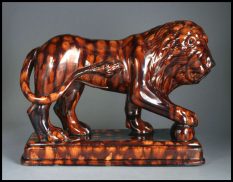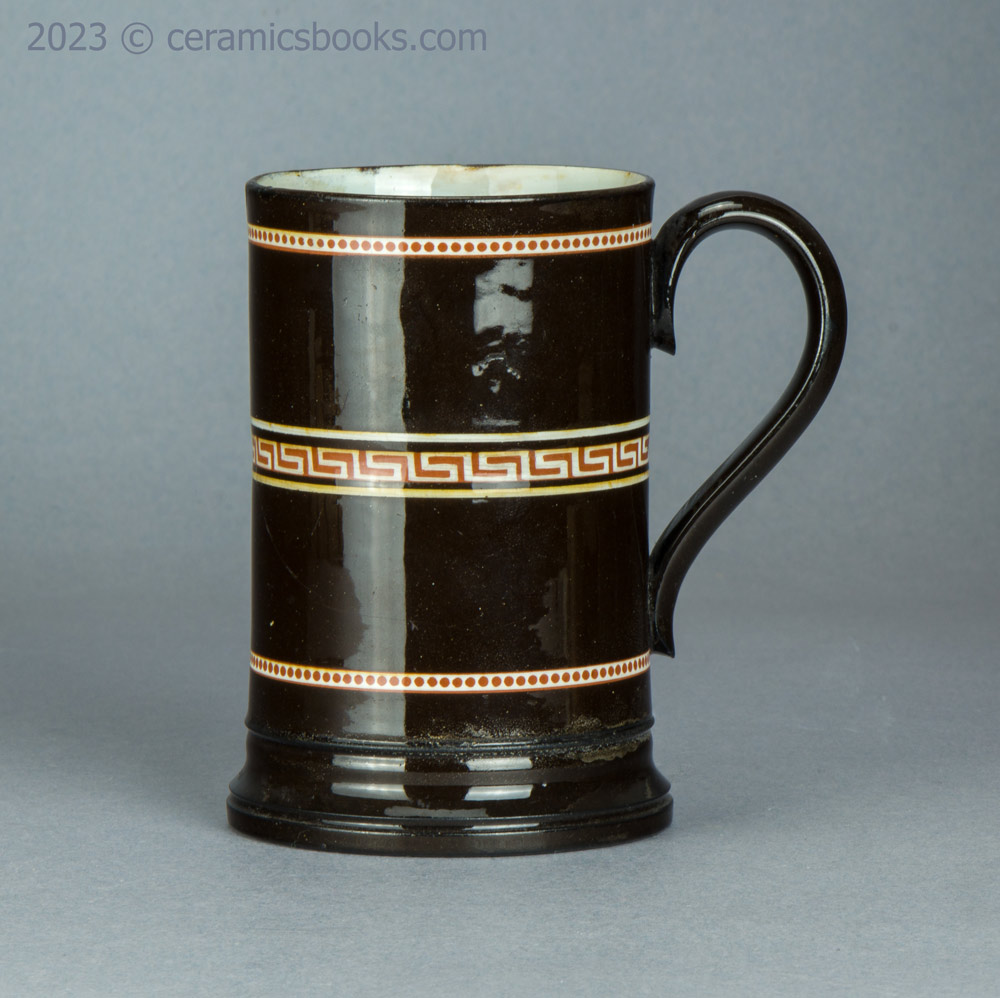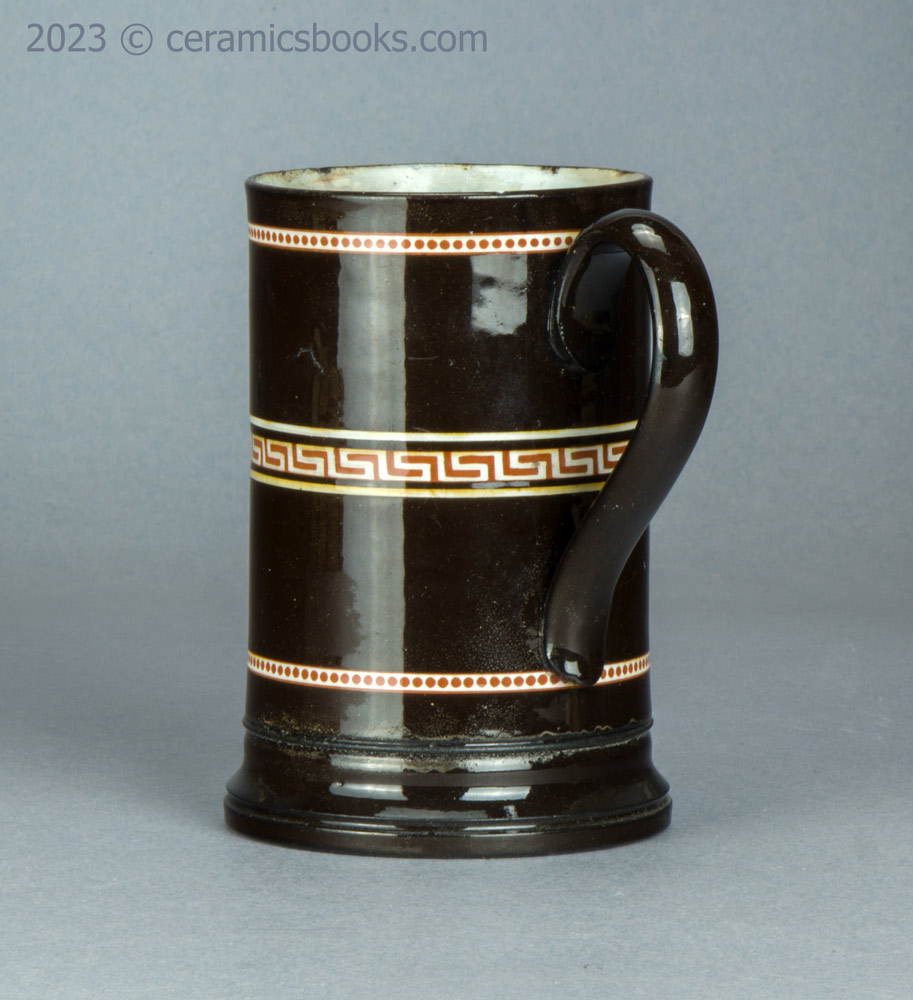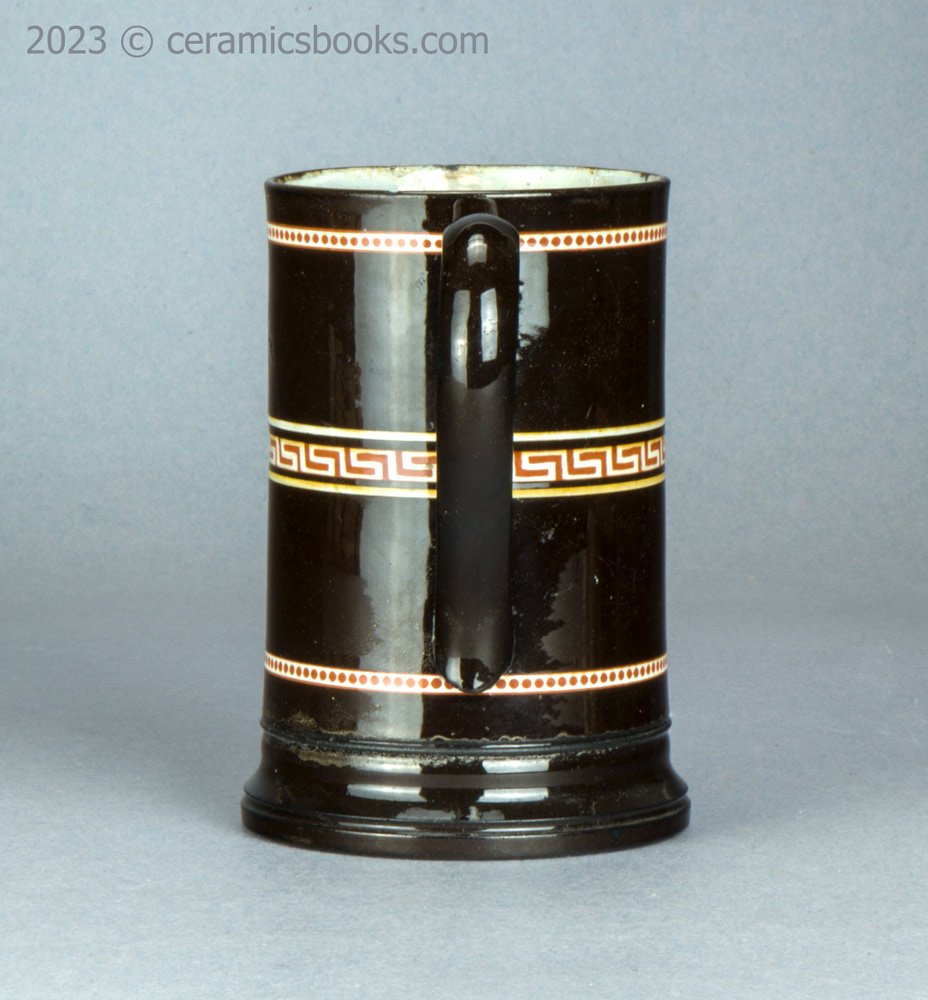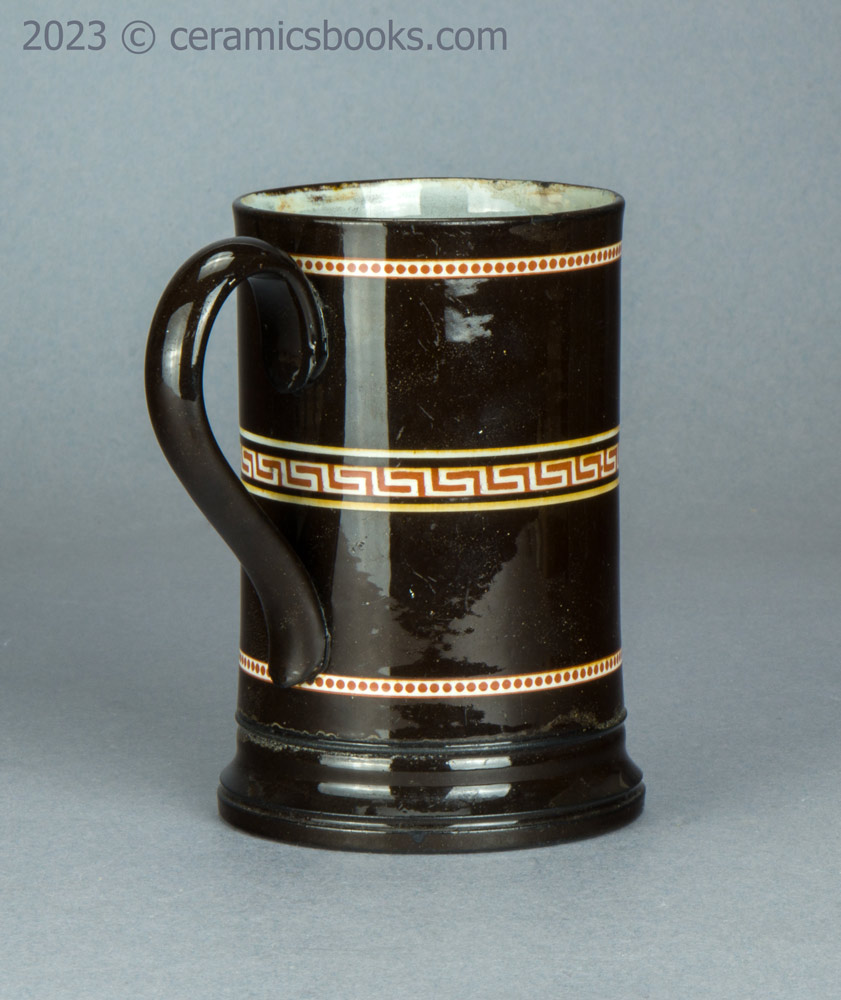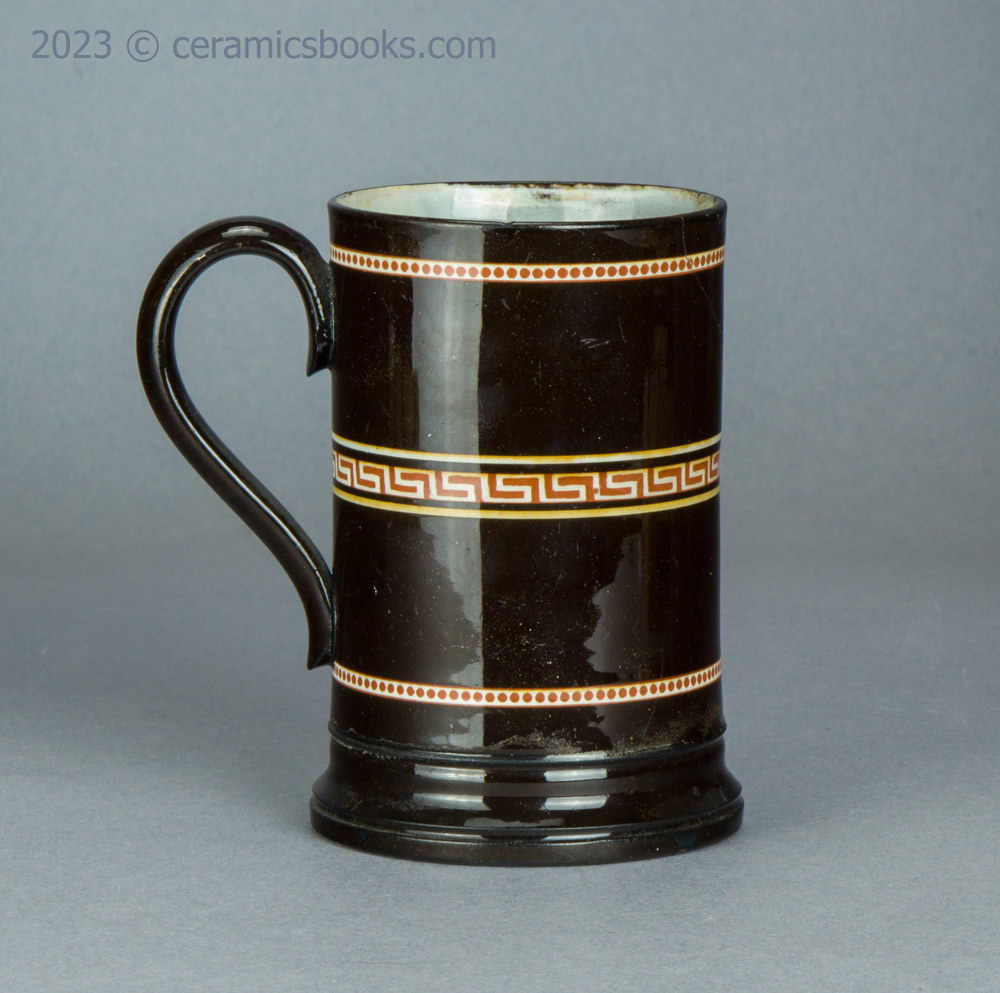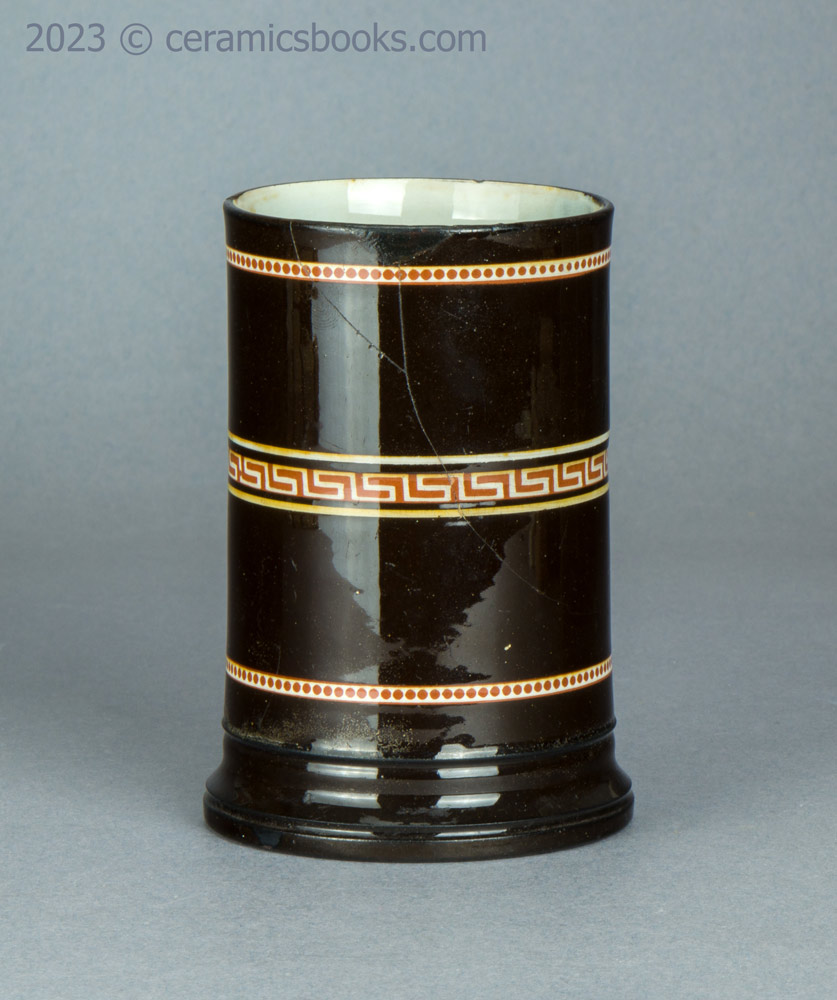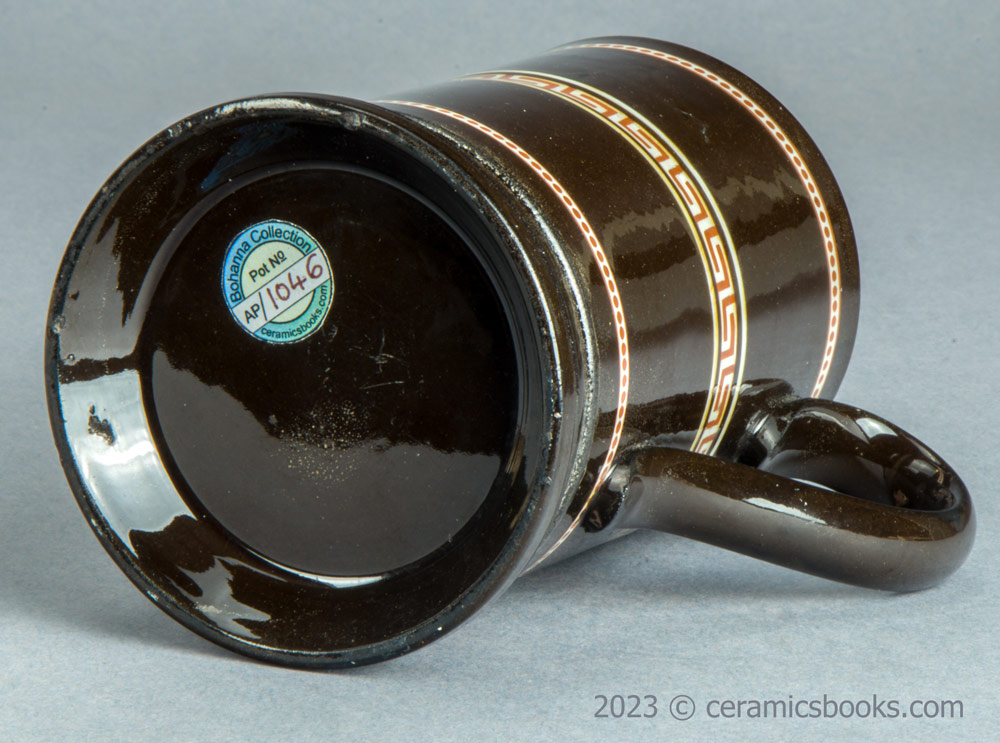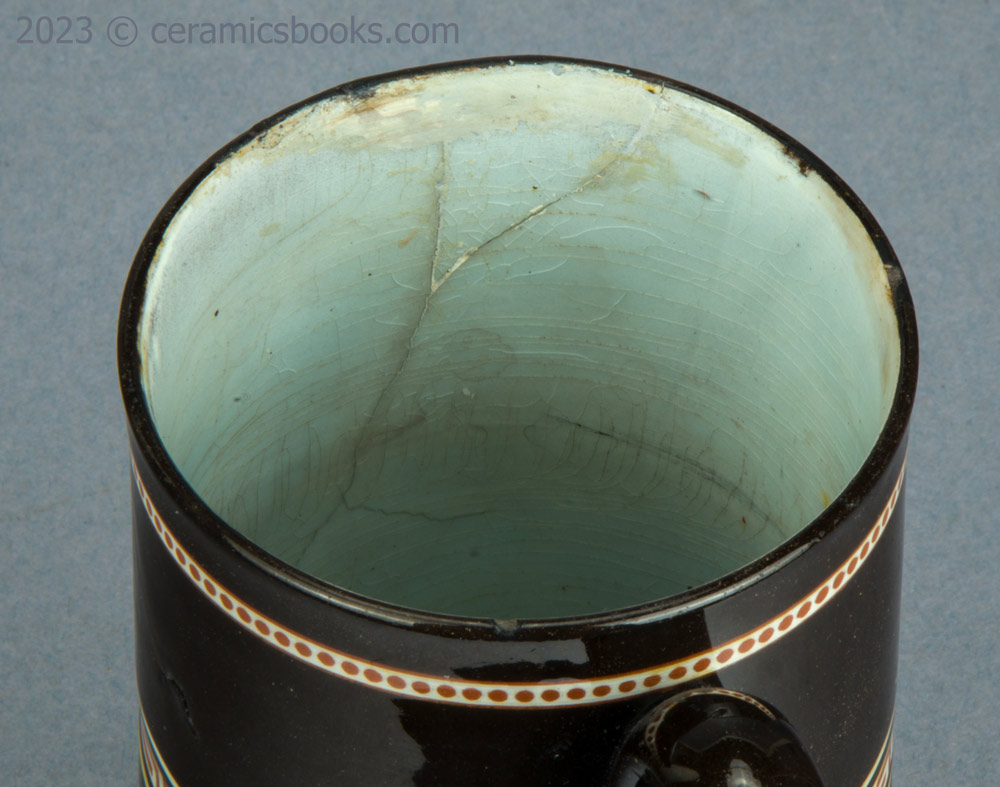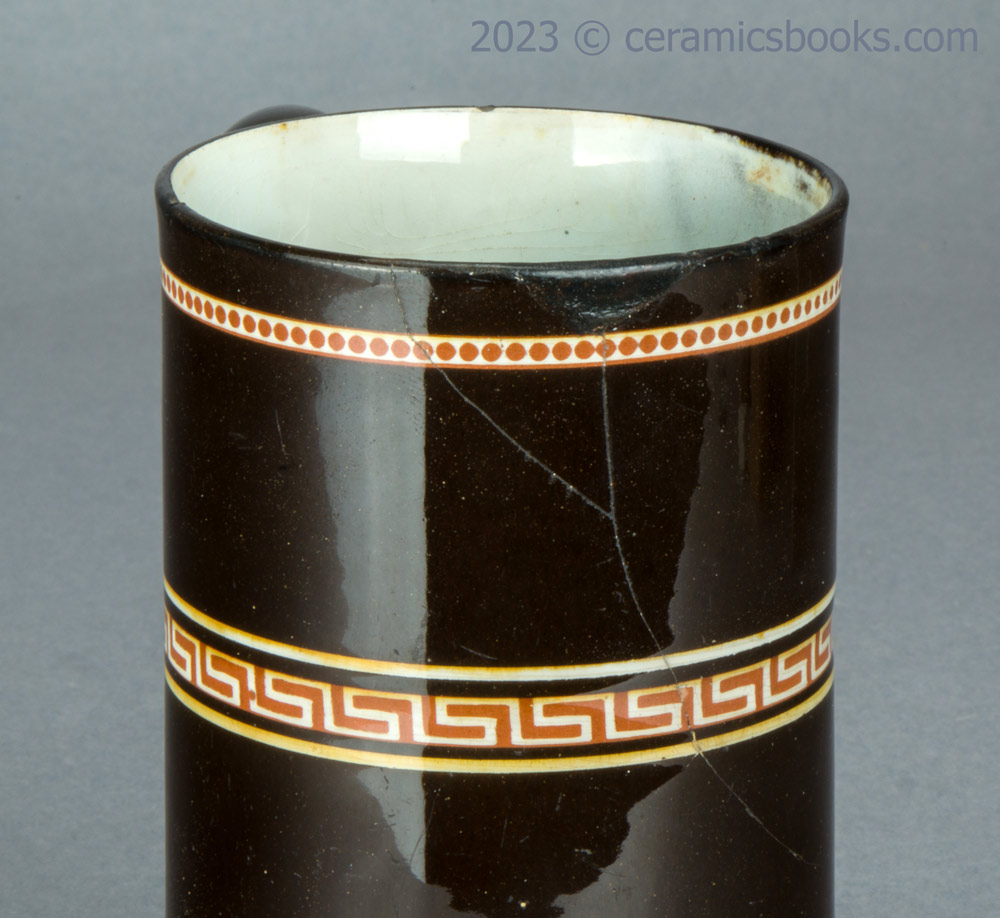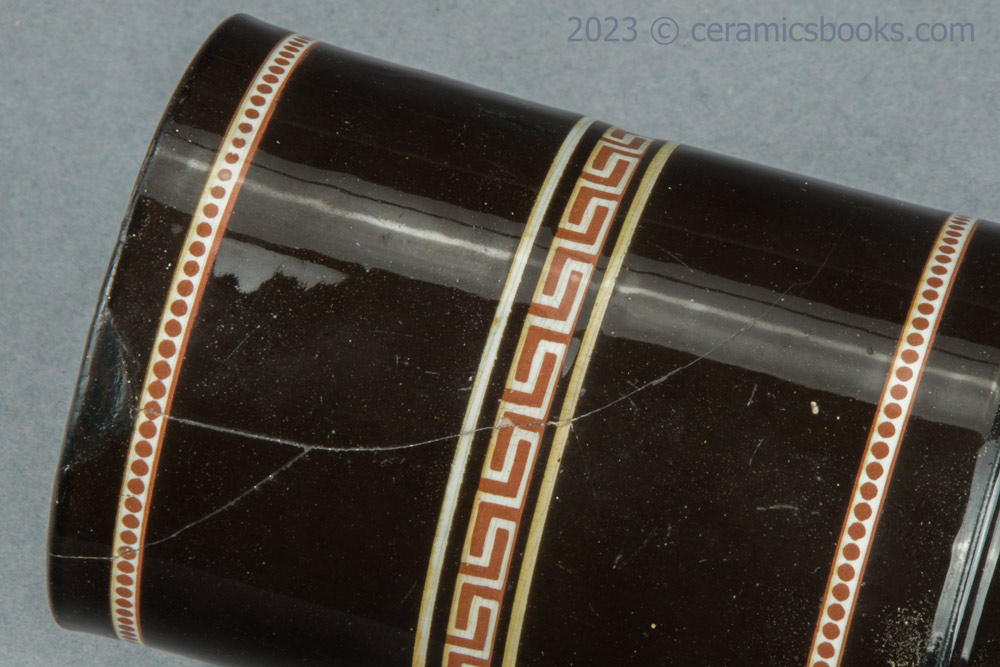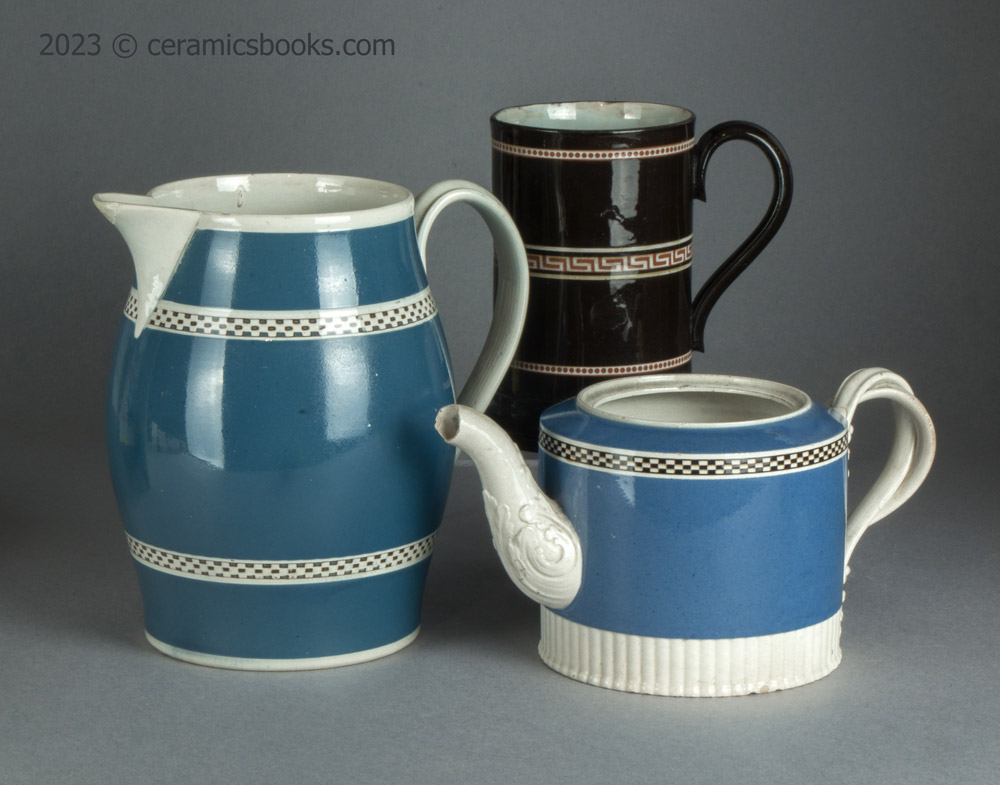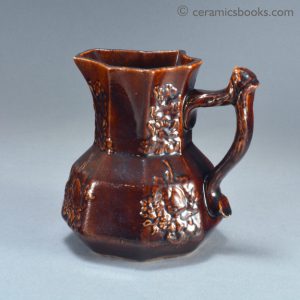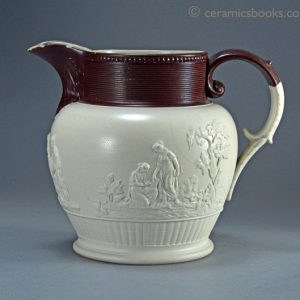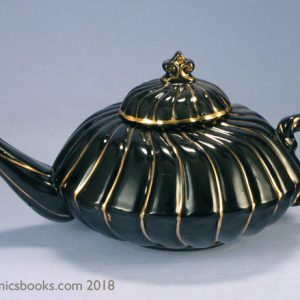A very rare redware tankard with an unusual type of turned industrial slipware decoration, related to mochaware and banded ware. The body is red earthenware with a dark brown slip coat over body and base. The interior has a white clay slip wash. There are rouletted bands of dots and Greek key filled with white slip. The tankard has a clear lead glaze which has created a yellow colour where the iron oxide from the slip bleeds into the glaze, which gives the rouletted bands a combination of white, red, yellow and dark brown colours.
The foot and deep recessed base are turned. The handle is plain extruded type. The body colour and glaze are very similar to the yellow transfer printed brownwares made in Britain in the early C19th (often incorrectly called ‘Portobello’ ware) as well as the Wilson type redwares.
This is the only example I’ve ever encountered with this particular decoration type and body combination, and must be considered very rare.
The final image is for comparison only. The other items are listed separately.
Pot ID: AP/1046
Dimensions: Approx. 123 mm high.
Net Weight (grams): 290
Date: c.1810-1830.
Condition Report:
This tankard has at some point been over-sprayed with paint which has then been removed to the extent that all damage has been revealed. However there are still traces of paint/varnish which need to be removed. A ‘V’ shape section of the rim has been re-stuck and there is a filled and painted associated chip on rim. The ‘V’ section has a crack which extends from the bottom of the V approx. 10cm with a short 2cm fork. There is some scratching and abrasion of the glaze at the top of the foot band.
